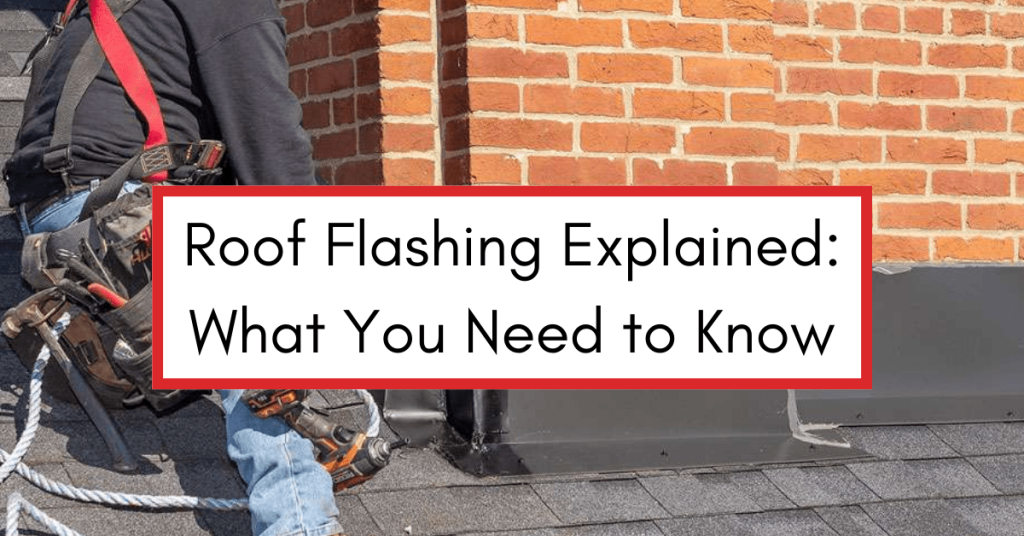Roof systems are made up of a handful of parts. From the shingles and accessories you see to the underlayment and roof flashing you don’t, a properly installed roof takes planning, coordination, and skill. This article will cover one element, roof flashing, in detail. If you are in the market for a new roof, you will benefit from spending a few minutes learning about this key waterproofing aspect of all roof replacement projects.
AIC Roofing & Construction, Inc. opened in 2003 with the belief that we could provide a better roofing experience to our customers by consistently exceeding expectations. Our team is knowledgeable, hard-working, and courteous to everyone we contact. We believe in sharing our experience and expertise by publicly answering some of our clients’ most popular questions in a public forum. That’s why we will share the critical elements of roof flashing.
The article covers the following:
- The importance of flashing
- What is flashing?
- Material for flashing
- Flashing types
- What parts of a roof need flashing?
- What does flashing look like?
Understanding the Importance of Flashing
Flashing protects the vulnerable areas of your roof where water is likely to penetrate. These areas include the joints, valleys, corners, chimneys, skylights, and vent pipes. By sealing these areas, roof flashing prevents water from seeping into your home and causing extensive damage. Without proper flashing, water can infiltrate your roof and find its way into your attic or ceiling, leading to mold growth and damage to your home’s structure.
But flashing does more than prevent leaks. It also helps to keep your home safe from insect infestation by sealing off potential entry points, such as gaps around chimneys or skylights. Flashing acts as a barrier against unwanted pests. This can save you from the hassle and expense of dealing with an infestation.
What is roof flashing?
Flashing refers to the thin, narrow pieces of metal or other durable materials installed in certain roof areas to prevent water from penetrating the structure. The most common locations for flashing include valleys, where two slopes meet, chimneys, vents, and skylights. Essentially, in any area where two planes of a roof intersect, it is critical to install proper flashing to direct water away from the structure and protect against leaks and water damage. While it may seem like a small roofing system component, flashing is crucial in maintaining a roof’s long-term integrity and water resistance.
What material is used for roof flashing?
Regarding flashing, there are a few different options for the type of metal used. Steel flashing is a common choice, providing durability and strength. However, aluminum flashing is popular because it comes in various colors and finishes, is lightweight, and resists corrosion. For a more premium option, copper flashing is often chosen for its aesthetic appeal and long lifespan. Ultimately, the type of metal used for roof flashing will depend on your budget and personal preference.
Flashing types
When it comes to roofing, proper flashing installation is key to preventing water damage and extending the life of your roof. Different types of flashing serve specific purposes and are placed in different areas. Step flashing protects the spots where the roof meets vertical walls or chimneys. Apron flashing usually sits at the base of a chimney or where a sloped roof meets a vertical wall. Roofers install counter flashing over step flashing for added protection. Valley flashing goes in areas where two roof surfaces meet, like roof valleys or where the roof joins a wall.
What parts of a roof need flashing?
The specific parts of a roof that require flashing vary depending on the design and structure of the roof. However, the most common areas that need flashing include the chimney, valleys where two roof planes meet, the edge of the roof known as the drip edge, and any vents or openings on the roof. Chimney flashing is essential to prevent water from seeping into the gap between the chimney and the roof. Meanwhile, valley flashing is essential to prevent water from settling in the concave area where two roof planes meet. Roofers install drip edge flashing along the eaves to keep water from seeping into the roof sheathing. They also place vent flashing around roof vents to keep them secure and watertight. Making sure these areas are properly flashed helps extend the life of your roof and prevents costly water damage down the line.
Should you be able to see the roof flashing?
You might not notice it from the ground, but flashing is usually easy to spot up close. Seeing it isn’t necessarily good or bad. What really matters is whether it’s installed correctly and doing its job to keep water from leaking into your home.
In closing
Proper and professional flashing is essential for a long-lasting, problem-free roof that looks great. It is worth spending time to learn about your flashing options. Poorly installed flashings are the #1 cause of roof leaks. If you live in Kentucky and have questions or concerns about your roofing needs, don’t hesitate to contact us. We can provide reliable help and advice on our services and products, as well as guidance on maintaining your home from water damage caused by poor flashing installation or weather damage.
Default insurance Lexington Louisville Richmond roof replacement
